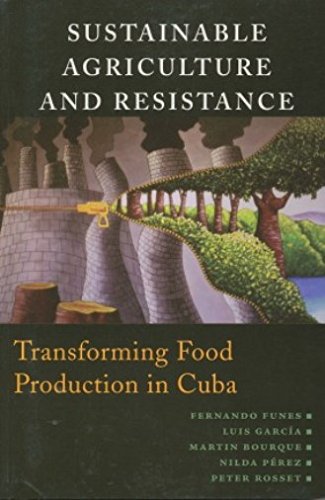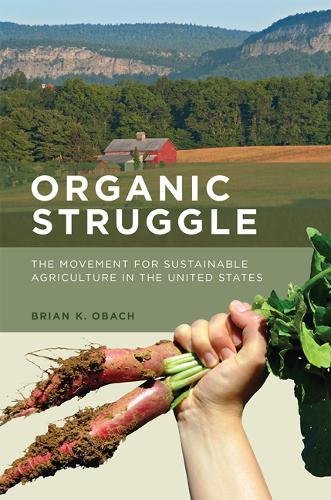
Sustainable Agriculture
Sustainable Agriculture Methods
![]() Today, Sustainable Agriculture is about increasing agricultural production of crops, such as fruit and vegetables harvested for human consumption, while at the same time conserving the ecological resources and land in which they grow. The conflict between sustainable agriculture and energy crop cultivation systems that allow biomass and bioenergy crops to be produced on agricultural land has created much debate between gardeners and farmers.
Today, Sustainable Agriculture is about increasing agricultural production of crops, such as fruit and vegetables harvested for human consumption, while at the same time conserving the ecological resources and land in which they grow. The conflict between sustainable agriculture and energy crop cultivation systems that allow biomass and bioenergy crops to be produced on agricultural land has created much debate between gardeners and farmers.
Over the last decades or so, the effects of increasing oil prices along with the environmental impact caused by burning fossil fuels, such as emission of harmful pollutants and climate change has led to an increase of biomass crops. In particular those used to supply biofuels (ethanol, biodiesel), as biofuels are now regarded as an important source of renewable energy to curb greenhouse gas emissions.
But the large scale production of biomass and second generation biofuels may be having dramatic effects on agriculture sustainability and food security. While organic agriculture allows for improvements in energy efficiency and reduced CO2 and other green house gas emissions, arable and cultivated land is now being planted with crops that occupy the land for long periods and need not to be replanted after each harvest such as trees grown for wood or timber.

But what is “sustainable agriculture”. Many think of agriculture as large farms and fields full of tractors using fertilizers and pesticides to produce a constant supply of sustainable foods.
But sustainable agriculture can also be implemented in small scale farms or in back yards and gardens where the process of growing your own fruits and vegetables using composting to turn waste into soil which can be easily managed by a single family.
Sustainable agriculture by definition is the process or science, and in many cases the business, of producing food, crops and other such edible products. It integrates the various practices used in the cultivation of seeds and plants as well as the breeding and raising of livestock (cattle, pigs or hens) to minimize their environmental impacts and prioritise long-term viability.
When these types of agricultural operations and farming practices are sustainably managed, they can have a big positive impact on natural habitats by promoting soil health, biodiversity, and water quality while reducing any reliance on synthetic inputs like pesticides and fertilisers.
The common practices that fall under the umbrella of sustainable agriculture can be numerous and varied depending upon the geography and ecology of the area. But there are a number of methods and practices that are more or less common to all sustainable agriculture methods such as:
- Soil Management – Soil is the fundamental resource for agricultural production systems so soil quality and health is a major consideration as good soil management produces crops and land that are healthier, less susceptible to disease, and generally more productive.
- Water Management – Although it appears to be everywhere, water is a precious resource so reducing losses from leaky pipes, collecting rainwater, reducing the amount of water used, and reusing water that would otherwise have been discarded, all helps conserve our water supply saving money and allowing us to operate efficiently in dry times.
- Crop Diversity – This is more than simply adding another crop or crop type to an existing field but focuses on how crops interact with each other, the soil, and with the environment. Different types of crops take different types of nutrients from the soil so the biological diversity of planting different crops help promote the agricultural development of plants, animals and micro-organisms.
- Crop Rotation – Sustainable crop rotation helps control soil erosion, weed control and disease suppression as well as improving soil biodiversity, water quality and wildlife increasing productivity and environmental sustainability. Crop Rotation is also an important part of planning a home garden.
- Nutrient Management – This about the application of nutrients and soil amendments in the form of manure, legumes, and organic wastes to improve the quality of the soil. While common nutrients like nitrogen, phosphorus, and potassium are required by crops and vegetables in relatively large amounts, excessive use of nutrients can pollute surface and ground water supplies adversely affecting the environment. Nutrient management and testing can provide plants and crops with the proper balance of nutrients while avoiding over application.
- Pest Management – The prevention and control of unwanted pests and bugs among the crops and plants can eliminate or at least drastically reduce the use of hazardous pesticides and sprays helping minimise the toxicity and exposure to the plants. Pest management is about removing the conditions that pest require from food to shelter and striking a balance between the good pests and organisms we need and the bad bugs as many birds, insects and spiders eat the bad pests.
The practices and methods that relate to sustainable agriculture can also be applied to sustainable forestry as both are promoting rural development which in turn can help to supply us with more healthy foods and generate new jobs.
Also while sustainable agriculture and home farming does not always encompass organic farming, organic farming is another practical method of reducing fossil fuel use at the level of production.
Urban food production is already a growing phenomenon throughout the world while the potential for micro farm and home vegetable gardening is enormous. Rooftops for example, offer large unused surface areas suited to container gardening of vegetables and crops. Rooftops enjoy the full benefit of sunshine and rainfall all year around making them ideal in most cases to sustainable agricultural methods.
Community supported agriculture and farmers markets allow home grown produce to be sold directly to consumers reducing the need for transportation and packaging making the process of growing food more sustainable. One way to make sure you have a consistent supply of fresh vegetables is to grow your own.
The industrialization of agriculture over the last 100 years with larger farms and machinery has helped farmers increase productivity ten fold. However, a decrease in crop diversity and crop rotation may have lead to cheaper foods, the environmental impacts of crop production have also increased. Sustainable agriculture seeks to combat some of these issues by making the best use of what Mother nature has to offer without damaging the environment.
Agricultural sustainability is a must if we want to be able to produce food for the generations ahead as the benefits of soil conservation, reduced energy consumption, efficient water use, and increased water quality over the long term will satisfy our human needs. Making the most efficient use of natural and renewable resources will help sustain economic viability and enhance our quality of life.
Tutorial Summary
As we move towards a solar society with less dependence on fossil fuels, the opportunities for sustainable agriculture development continue to grow. The emerging fields of solar design, green architecture and building design, restoration of buildings, ecological engineering along with sustainable agriculture are all laying the foundations for a better world.
Sustainable agriculture is truly a viable alternative to conventional intensive farming by reducing costs and/or offering many environmental benefits such as lower pesticides and chemical fertilisers, better crop rotation, conserving natural resources and preserving animal habitats, etc. But it is also about developing sustainable food production and a better management and use of our woods and forests.
It encompasses techniques such as crop rotation, organic farming, agroforestry, and integrated pest management and about effectively using technology as a tool to improve food production and biomass crops. The application of science and technology to agriculture along with the use of computers, electronics and state-of-the-art equipment will help farmers large and small feed the growing population of the world well into the 21st century.
The need for sustainable management of our lands and resources is becoming increasingly important. The demands of agricultural and farming is rising rapidly as the world’s population continues to grow. Agriculture’s connections to the world economy and land biodiversity make it an important part of conservation projects around the world.
To learn more about sustainable agriculture, or if you just want to explore the advantages and disadvantages of how sustainable farming works, then Click Here to get your copy of one of the top books on sustainable market farming direct from Amazon today and learn how backyard or hobby gardeners supplement their family’s diet with sustainable home grown fruits and vegetables.










Local farmers markets and nurseries are the best as they will even get special plants for you. We have a small farm, and although we try to be “organic” in that we practice sustainable gardening and try not to use pesticides or herbicides, we are not registered as organic as the never ending paperwork takes too much time to complete for a small home grown operation like ours. We just say we use all “natural” methods for our hens, bees, vegetables, and herbs, etc.